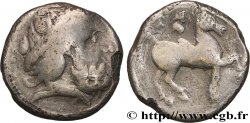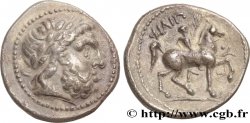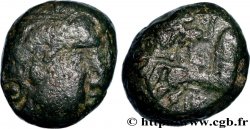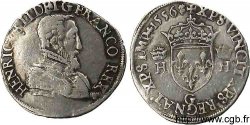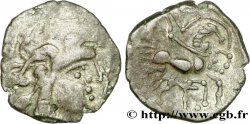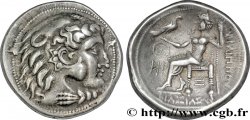v61_0399 - DANUBIAN CELTS - IMITATIONS OF THE TETRADRACHMS OF PHILIP II AND HIS SUCCESSORS Tétradrachme “au cavalier et au triskèle”
MONNAIES 61 (2014)
Starting price : 420.00 €
Estimate : 600.00 €
Realised price : 420.00 €
Number of bids : 1
Maximum bid : 450.00 €
Starting price : 420.00 €
Estimate : 600.00 €
Realised price : 420.00 €
Number of bids : 1
Maximum bid : 450.00 €
Type : Tétradrachme “au cavalier et au triskèle”
Date: c. IIe-Ier siècles AC.
Metal : silver
Diameter : 25 mm
Orientation dies : 3 h.
Weight : 11,12 g.
Rarity : R3
Coments on the condition:
Très belle monnaie pour ce monnayage rare. Les types sont complets, avec un droit légèrement décentré et un beau revers idéalement centré. Patine de collection ancienne
Predigree :
Cet exemplaire provient d’une collection dispersée par Künker
Obverse
Obverse legend : ANÉPIGRAPHE.
Obverse description : Tête stylisée et barbue de Zeus à gauche, la chevelure laurée et décomposée en petites mèches ; grènetis circulaire.
Reverse
Reverse legend : ANÉPIGRAPHE.
Reverse description : Cavalier casqué au pas à gauche ; ligne d’exergue perlée ; un V, un Pi et un triskèle entre les jambes du cheval.








 Report a mistake
Report a mistake Print the page
Print the page Share my selection
Share my selection Ask a question
Ask a question Consign / sell
Consign / sell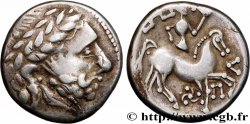
 Full data
Full data

